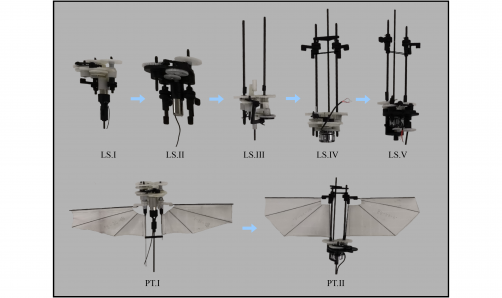BREAKING: A groundbreaking study has just been released that could transform the future of flapping wing micro air vehicles (FWMAVs). Researchers from Beihang University and Tsinghua University have developed an innovative lift system that dramatically enhances aerodynamic performance while slashing power consumption.
This urgent update reveals that existing FWMAVs face significant limitations in achieving controllable flight, particularly those powered by intelligent materials and conventional motors. The new research, titled “Lift System Optimization for Hover-Capable Flapping Wing Micro Air Vehicle“, proposes a solution that mimics the remarkable flight capabilities of hummingbirds—known for their exceptional maneuverability.
Key findings from the study include an advanced lift system that integrates elastic energy storage elements at the wing root, closely imitating the musculoskeletal system of hummingbirds. This innovative design allows for periodic energy storage and release during the flapping cycle, optimizing the flapping mechanism parameters, and achieving an impressive flapping angle of 154°.
The research team, including authors Shengjie XIAO, Yongqi SHI, Zemin WANG, and others, identified an optimized wing configuration called 80-455, comprised of Icarex PC31 material with an 80 mm wingspan and 45 mm chord length. This new design enhances lift generation significantly, achieving a stable lift of 31.98 g while maintaining a lightweight fuselage of just 1.6 g—a reduction of 30.4% from its original weight.
In addition, the prototype’s performance showcases a remarkable reduction in power consumption of 4.5% under the same lift conditions. Flight tests confirm that the FWMAV can hover continuously for around 1 minute at 50% throttle, executing maneuvers like rapid ascent with exceptional aerodynamic efficiency.
The research team has made a significant leap in overcoming the gaps in materials, energy, design, and drive systems that have historically limited FWMAV performance. This development not only enhances the capabilities of micro air vehicles but also opens the door to a range of applications, from environmental monitoring to disaster response.
For those interested in the full details of this transformative study, the paper is available at https://doi.org/10.1007/s11465-024-0790-6.
Stay tuned for more updates as this exciting research unfolds and its implications for the future of aerial technology continue to develop. This breakthrough signals a new era for micro drones, promising enhanced performance that could revolutionize the industry.







